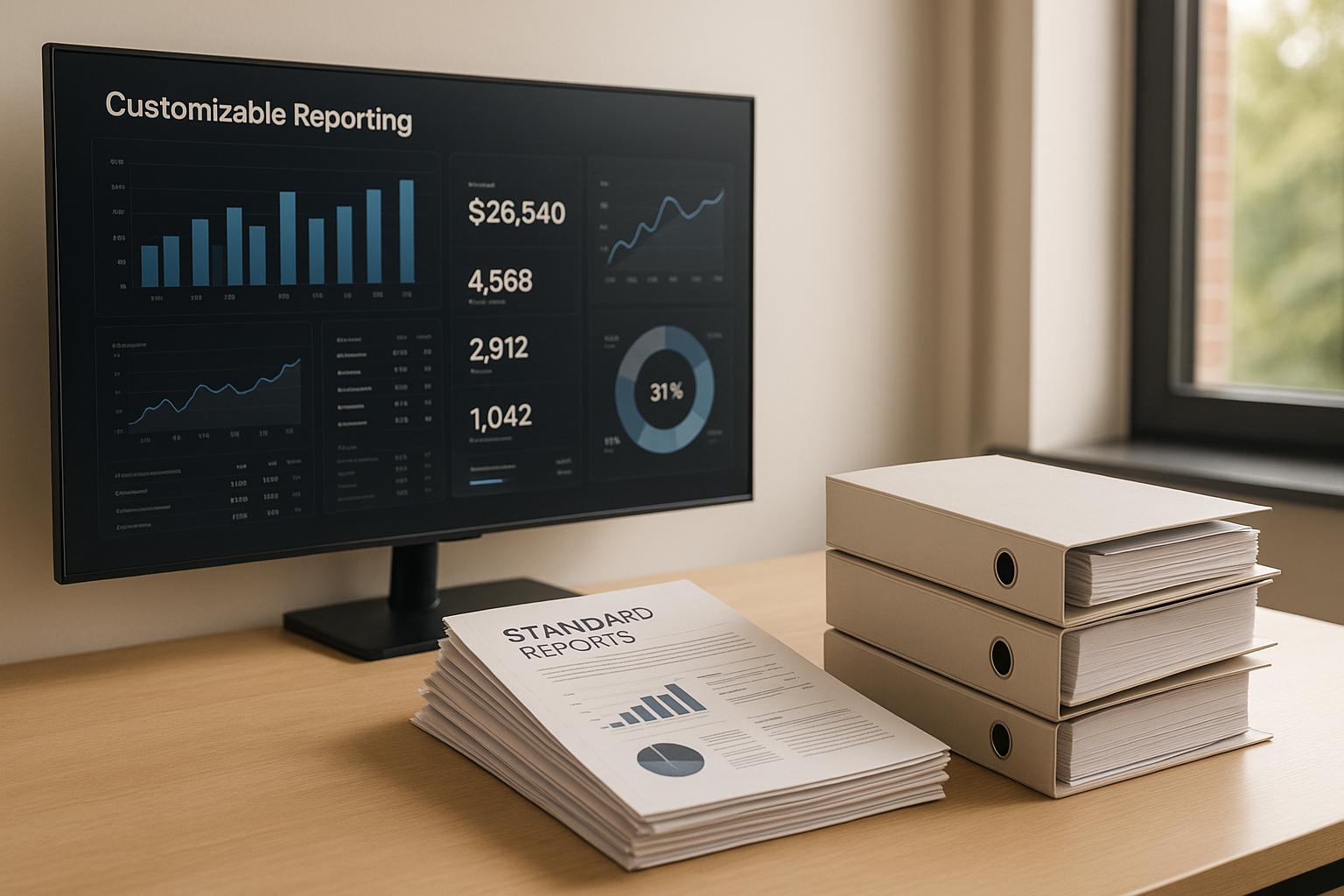Data Privacy Due Diligence for Cross-Border M&A

Data privacy is a critical factor in cross-border mergers and acquisitions (M&A). Failing to comply with global privacy regulations like GDPR, CCPA, or PIPL can lead to fines, reduced deal valuations, and operational risks.
Key Takeaways:
- Why It Matters: Privacy violations can cost up to 4% of global revenue (GDPR fines) and impact deal prices (e.g., Yahoo-Verizon deal).
- Challenges: Overlapping laws (GDPR, CCPA, PIPL) create compliance hurdles in data transfers, breach notifications, and consumer rights.
- Steps to Take:
- Review data assets (collection, storage, processing).
- Assess privacy policies for compliance across jurisdictions.
- Ensure legal mechanisms for cross-border data transfers.
- Analyze past breaches and third-party vendor risks.
Effective due diligence and post-merger integration of privacy practices are essential to reduce risks and protect deal value.
Global Data Privacy Laws
Navigating international data privacy laws is a key factor in ensuring success during cross-border M&A transactions. These regulations can heavily influence deal valuations, compliance strategies, and how companies integrate post-merger.
GDPR Requirements

When M&A deals involve EU data subjects, companies need to prioritize compliance with GDPR. In 2019, over 50% of M&A practitioners cited GDPR concerns as a reason for failed negotiations, especially in Europe.
Here’s how GDPR affects cross-border deals:
| Requirement | Impact on M&A |
|---|---|
| Data Transfer Mechanisms | Requires the use of standard contractual clauses or binding corporate rules |
| Explicit Consent | Demands documented consent for data processing |
| DPO Appointment and Breach Notification | Large-scale data processors must appoint a DPO and report breaches within 72 hours |
While GDPR is the dominant regulation in Europe, the U.S. offers a more fragmented regulatory environment, creating its own set of challenges for cross-border transactions.
US Privacy Laws
In the United States, privacy laws vary across states and industries, creating a decentralized regulatory framework. The California Consumer Privacy Act (CCPA) stands out as a leading state-level regulation, with substantial implications for M&A. A notable example: Yahoo's data breaches led to a $350 million reduction in Verizon's acquisition price.
Key considerations for U.S. privacy laws include:
- State-specific and industry-specific compliance rules
- Consumer rights to opt out of data collection
- Requirements for notifying authorities about data breaches
Unlike the U.S., China enforces a centralized approach with its PIPL, which introduces a distinct set of challenges for cross-border deals.
China's PIPL Rules

China’s Personal Information Protection Law (PIPL), which came into effect in November 2021, has similarities to GDPR but also introduces unique hurdles. Its strict rules on cross-border data transfers demand careful planning.
Key aspects of PIPL include:
| Requirement | Details |
|---|---|
| Government Assessment and Transfer Mechanisms | Requires security assessments and limits transfer options |
| Local Storage | Some operators must store critical data within China |
| Certification | Enforces specific certification standards for cross-border transfers |
PIPL applies different restrictions based on factors such as organizational status and data volume. This makes compliance evaluations a critical part of due diligence for cross-border deals involving Chinese entities. Companies must address these requirements to structure deals effectively.
Data Privacy Due Diligence Steps
Due diligence is crucial for identifying and addressing data privacy risks that could affect deal outcomes. By thoroughly evaluating data practices and compliance measures, companies can reduce risks and maintain regulatory compliance.
Data Asset Review
A detailed review of data assets helps pinpoint how personal data is managed within the target organization:
| Data Asset Component | Key Areas to Assess |
|---|---|
| Data Collection | Consent forms, legal documentation |
| Storage Systems | Server locations, cloud services, backups |
| Processing Activities | Third-party processors, data-sharing agreements |
| Security Controls | Access restrictions, encryption, breach response protocols |
The focus should be on high-risk data categories such as customer financial details, employee records, and sensitive personal data that may be subject to stricter regulations.
Privacy Policy Assessment
Privacy policies must comply with legal standards in all applicable jurisdictions.
Key areas to assess include:
| Policy Element | Compliance Focus |
|---|---|
| Transparency | Clear, user-friendly disclosures |
| Rights Management | Processes for data access, deletion, and corrections |
| Processing Details | Defined purposes and retention periods |
| International Transfers | Legal safeguards for cross-border data movement |
Data Transfer Compliance
Cross-border data transfers are heavily regulated and require careful scrutiny. Companies must ensure legal mechanisms are in place for international data flows.
Key steps for assessing transfer compliance:
- Check Standard Contractual Clauses (SCCs), Binding Corporate Rules (BCRs), and third-party agreements for adherence to post-Schrems II requirements.
- Review approved BCRs to confirm their scope and compliance.
- Examine processor and sub-processor agreements for regulatory alignment.
Additionally, evaluate current and anticipated data flows post-merger to identify any compliance gaps that could affect the deal's value or require immediate action.
sbb-itb-e766981
Risk Assessment Methods
Risk assessment goes beyond basic due diligence by pinpointing vulnerabilities that could jeopardize the success of a deal.
Compliance Review
A compliance review focuses on how well a company adheres to data protection laws across various regions.
| Assessment Area | Key Evaluation Points |
|---|---|
| Documentation | Privacy notices, consent records, DPIAs |
| Internal Controls | Access management, data minimization practices |
| Training Programs | Staff awareness, role-specific privacy training |
| Regulatory Filings | Registration with authorities, required certifications |
Looking at past compliance issues, such as breaches, can provide a clearer picture of how resilient the company is in handling operational challenges.
Security Breach Analysis
Analyzing past security breaches sheds light on how well a company protects its data and how effectively it responds to incidents.
Key areas to examine include the severity of breaches, how quickly the company responded, the root causes, and the financial fallout. This could involve fines, damage to reputation, or customer loss.
It's also essential to consider the risks associated with third-party vendors, as they often have significant access to sensitive information.
Third-Party Risk Review
Third-party vendors can introduce privacy risks, especially in cross-border M&A scenarios.
| Risk Factor | Assessment Criteria |
|---|---|
| Data Access Scope | Types and volume of data accessed |
| Geographic Location | Data storage and processing locations |
| Compliance Status | Vendor certifications and audit results |
| Contract Terms | Data protection obligations and liability provisions |
Focus on vendors that handle sensitive data or operate in high-risk regions. Assess their data access levels, compliance certifications, geographic locations, and contract obligations. A thorough review ensures that vendor-related risks don’t compromise the deal’s value or compliance efforts.
Post-Merger Privacy Integration
After assessing risks, the next step is ensuring privacy practices are aligned and effective across the newly merged organization. This is essential for staying compliant and safeguarding sensitive data.
Policy Standardization
Merging privacy policies takes careful planning, especially when honoring prior commitments made during data collection.
"One company's purchase of another doesn't nullify the privacy promises made when the data was first collected."
A good example is the Facebook-WhatsApp acquisition. Even though WhatsApp's privacy policy allowed for data transfer during acquisitions, the FTC required WhatsApp to stick to its original privacy commitments after the merger.
To create a unified privacy policy, focus on policy review, compliance mapping, and policy updates. This ensures the new framework respects previous obligations while promoting consistent practices across the organization.
Data Management Framework
Managing and securing data becomes especially challenging in cross-border mergers, where different regulatory standards come into play. The Marriott-Starwood merger is a cautionary tale - poor data integration led to a breach affecting 500 million records.
A strong data management framework should include:
- Mapping and classifying all data assets.
- Establishing unified systems for consent and breach protocols.
- Implementing consistent security measures, particularly for international data transfers.
This approach minimizes risks and ensures compliance across regions.
Team Integration
Bringing teams together involves more than just logistics - it requires training, ongoing support, and alignment of privacy strategies. Addressing cultural differences early can make collaboration much smoother.
For companies operating in multiple jurisdictions, it's critical to adopt standardized procedures that meet the strictest regulatory standards while keeping operations efficient. This is especially important in cross-border mergers, where regulatory differences can make integration more complex.
Cross-Border M&A and Data Privacy: Key Takeaways
Cross-border M&A transactions require a sharp focus on data privacy compliance. Proper attention can help reduce risks and protect the value of the deal.
Key Areas to Review During Due Diligence
When assessing data privacy risks, it's essential to examine several critical areas. Here's a quick breakdown:
| Assessment Area | Key Considerations | Risk Factors |
|---|---|---|
| Data Handling & Privacy | Collection methods, consent practices, policy consistency, rights of data subjects | Non-compliance, misaligned commitments |
| Data Transfers | Mechanisms for cross-border data movement, SCCs, regional rules | Invalid or outdated transfer protocols |
| Security Measures | History of breaches, current security systems, vendor oversight | Weak protections, insufficient controls |
By identifying these risks, companies can prepare a targeted plan to address compliance gaps and safeguard their operations.
Steps for a Strong Action Plan
"A company with solid cybersecurity and a clear focus on data privacy is far more attractive than one with vulnerabilities that could lead to post-acquisition issues."
To carry out effective due diligence, consider these steps:
- Bring in Experts: Work with advisors like Phoenix Strategy Group to handle regulatory complexities and plan seamless integrations.
- Adopt a Compliance Framework: Use a standardized framework that aligns with key regulations while keeping operations smooth.
- Plan for Integration: Outline a step-by-step timeline to unify privacy policies, data systems, and team workflows.
Global frameworks such as APEC CBPR and PRP can also help structure cross-border data transfer strategies effectively.




